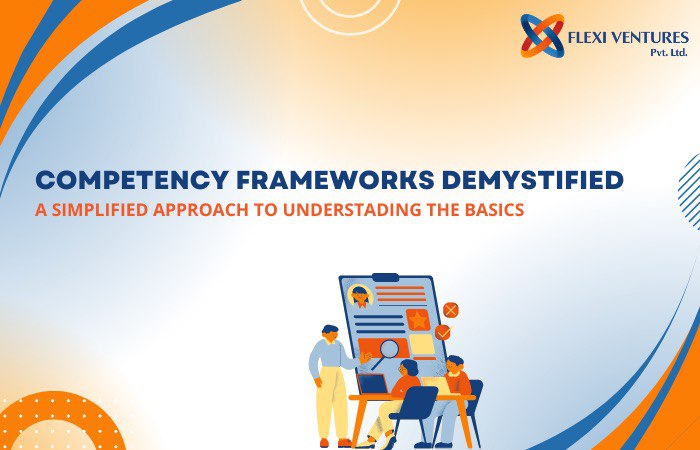A competency framework is a benchmark that can be used to monitor performance and design talent management strategies such as hiring, development, and performance assessment. These frameworks can be used to keep personal growth and company goals in line, so the company objectives are met.
Competency frameworks must be simple to understand and implement. Complicated frameworks create confusion and are not effective. A simple, streamlined competency framework is much easier to outline, understand, and apply to everyone. Such a framework tells staff how they can improve their performance. Expectations are clearly outlined, enabling better talent development, and performance management.
Understanding Competency Frameworks:
Competency is the total of skills, knowledge, and behaviours to efficiently perform a job. You may have the skills and knowledge but it is of no use till it is applied correctly. Competencies can help people adapt and succeed in different situations. Therefore, a competent individual is well-equipped to meet the challenges of his roles, contributing to both personal and organizational success.
Competency frameworks define specific competencies for each role within an organization. These frameworks thus are effective guides that not only identify the knowledge, skills, and attributes that employees need but also gear them toward performing well at their jobs. By clearly outlining the expected competencies, companies can then easily streamline the processes of recruitment, training, development, and performance evaluation. Managing talent is simplified with a ready competency framework; it is also easy for people to understand the expectations of their roles.
Components of Competency Frameworks:
KSABs-is an abbreviation for knowledge, skills, abilities, and behaviours. These are the key factors that decide a job competency. Knowledge means knowing the subject in theory or practice. Skills are acquired or earned abilities to perform a job or task with a pre-decided goal within a certain time. Skills of all kinds can be acquired with experience or training. Abilities are how well someone can perform a task-mentally and physically. You can be “able” only when you have both “skills” and “knowledge.” Behaviour is the overall conduct of an individual, be it with self, or others, and reflects character and professionalism.
KSABs are crucial in defining job roles and setting expectations of people from their roles. If a person has Knowledge about the job then he can perform efficiently. Skill is how the person practically applies what he knows in his job. Abilities represent the potential to perform tasks to the required standard, often underpinning both knowledge and skills. Behaviours are the attitude towards a job and will include communication, teamwork, and problem-solving abilities that also have an impact on office culture and performance. KSABs outline the competencies required for a job role, serving as a guide for recruitment, training, and performance evaluation processes.
Designing a Competency Framework:
A systematic approach is necessary when creating a competency framework with a clear definition of skills, knowledge, and behaviours necessary for every job role in a company. First, an understanding of the business strategy is necessary so the framework is in line with the broader goals of the company. It can begin with a discussion with senior leaders who can help with their input about the goals and objectives of the company. Their support is also needed for the implementation of a competency framework.
When stakeholders, especially senior leadership are involved, getting their go-ahead for integration of the competency framework into the company structure and processes becomes quick and easy. Also, leaders are the best people to help HR understand the company’s mission, vision, values, and goals so that the competencies are not mismatch with these elements. The next step is a thorough study of job descriptions, business plans, and regulations to understand the kind of competencies required to function within roles. Then these competencies must be strategically tied in with the business goals. The success of this process lies in it matching the staff and company objectives.
Benefits of Competency Frameworks:
Drawing up “Competency frameworks” comes with multiple advantages that can put the company on the route to success. The frameworks enable efficient recruitment and selection processes, so you can identify and hire the right candidates. You not only have people with the right skills for a particular position but also have better quality people. Such competency-based recruitment is a fair and objective process, removing biases as known in traditional hiring methods.
At the same time, staff also gains from such frameworks as it is beneficial for growth, development, and performance management. Also, by aligning job requirements with individual competencies, companies can develop training programs to address skill gaps. Appraisals can also be unbiased and more objective when done using the framework. Feedback can also be more precise and meaningful. This is great for the growth and career advancement of the employee as well as great for the company. Thus, there is nothing quite like having competency frameworks in place as they are the base for developing skilled, motivated people and pushing efforts towards business excellence.
Integration with HR Processes:
Competency frameworks are critical in merging the operations process with HR functions. In the recruitment phase, competency frameworks help in hiring the right people by evaluating certain competencies for specific roles. HR professionals can confidently make better hiring decisions; all that they need to analyse is whether the candidate’s skills meet the set job requirements. These frameworks are also helpful in facilitating training initiatives within teams and the organization on the whole. Skill gaps and development areas are quickly identified with these frameworks, so HR can also tailor training programs to address these when mapping up the training content.
These frameworks also help in succession planning, by evaluating the core competencies needed in leadership roles. HR can then go-ahead and groom the right candidates to be successors for a smooth transition. To sum up, there is no replacing the competency framework process if the company has to grow and excel.

